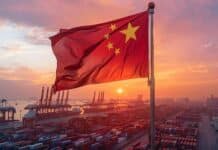
The S&P Global Report, “China Inc. Heads to Global South in the Age of Tariffs,” highlights how rising tariffs and geopolitical tensions have prompted Chinese companies to shift their focus from traditional Western markets to emerging economies in the Global South. This strategic pivot helps China diversify its trade and investment partners, tapping into new growth opportunities while navigating challenges posed by protectionism. As a result, South–South trade is strengthening, reshaping global economic dynamics in China’s favor.
Leading Chinese firms are heading to the Global South amid rising US tariffs on Chinese
goods since 2018. S&P Global expects this trend to continue as companies look to
diversify sales away from the US and expand to other markets with stronger growth
prospects than at home.This trend is reflected in the rapidly growing trade between China and the Global South,
which includes most of the developing world. China now exports over 50% more to
these regions ($1.6 trillion) than to the US and Western Europe combined ($1 trillion).
Booming trade has helped secure Chinese firms’ access to these markets. On average,
China’s trade with its top 20 trading partners in the Global South amounts to nearly
20% of these countries’ GDP. […]China’s trade with the Global South has expanded significantly faster than with the rest
of the world, particularly after the US raised tariffs on the country in 2018.
China’s exports of goods to these regions have doubled since 2015, compared with
growth of 28% to the US and 58% to Western Europe. This acceleration has been most
pronounced from 2020 to 2024, during which the country’s exports to the Global South
rose 65%, three times the growth rate (21%) of the previous five-year period. […]Despite these risks, high uncertainties under US tariffs and China’s slowdown will
continue to motivate Chinese firms to head to the Global South. The result could be a
new order of global commerce where South–South trade becomes the new center of
gravity and Chinese multinationals emerge as the new key players
Read more here.



